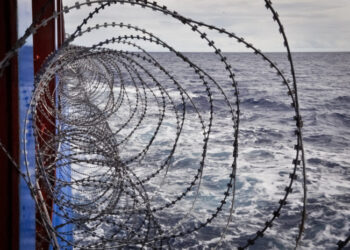Special Report on Incidents of Siphoning of Fuel/Oil at Sea in Asia – Part II

Number of Siphoning Incidents
ReCAAP ISC released the second part of a special report on incidents of siphoning of fuel/oil at sea in Asia.
The ReCAAP ISC was concern and has been working closely with the shipping industry, governmental agencies, international organisations and ReCAAP Focal Points in sharing latest situation updates, case studies for purpose of highlighting best practices and sharing of lessons learned, encouraging pro-active actions by respective agencies in addressing the situation collectively.
Generally, the modus operandi of the perpetrators in most of the siphoning incidents was fairly similar.The perpetrators were interested in the manifest of fuel/oil onboard the vessel; and had no intention to hijack the vessel or kidnap the crew. Upon boarding the vessel, they tied the crew and locked them in the cabin, steered the vessel to another location to conduct the siphoning onto another vessel which would come alongside. After completion of the siphoning, the perpetrators would destroy the vessels communication and navigation equipment, stole the crews cash and personal belongings before leaving the vessel. The crew was not harmed and there was no report of violence involved.
The modus operandi of the 12 incidents of siphoning which are summarised below:
Size of Vessel
Of the 12 incidents, majority involved tankers of less than 2000 GT. Seven incidents involved tankers between 1000-2000 GT, two incidents involved tankers of 2148 GT and 2223 GT, one incident involved a tanker of 3238 GT, one incident involved a tanker of 4080 GT and one incident involved a tanker of 5153 GT.
Time of Incident
All boardings occurred during hours of darkness, with nine boardings took place between 2000-2345 hrs, two between 0055-0205 hrs, and one at 0600 hrs.
Duration the Perpetrators were onboard Vessels
It varied from case to case, and likely involved different groups of perpetrators although it may be the same for some incidents due to the similarity in modus operandi. Of the nine incidents with reports on the duration the perpetrators remained onboard the vessels; six incidents involved the perpetrators onboard the vessels for estimated 6-10 hours, and two incidents for estimated 4-5 hours. However, in the incident involving Srikandi 515, the owner lost the tanker for 49 days (9 Oct-27 Nov 14). Investigation is ongoing as to what happened to the vessel during this period.
Number of Perpetrators
Of the 12 incidents, six involved 8-10 perpetrators, three involved 5-7 perpetrators, one involved 16 perpetrators and two involved 25-26 perpetrators.
Weapons
Majority of the incidents involved the perpetrators armed with knives and firearms (such as guns, handguns, pistols). Of the 12 incidents, eight reported that the perpetrators were armed with knives and firearms. Notably, there was no report of the firearms being discharged.
Treatment of Crew
In most of the incidents, the crew was tied and locked in the mess room or engine control room when the perpetrators steered the vessel to the South China Sea to carry out siphoning. The crew was not injured in most of the incidents except for minor injury sustained by the crew in two incidents; namely onboard Sri Phangnga and Sunrise 689.
Action by the Crew
Of the 12 incidents, SSAS was activated in four incidents, of which the maritime enforcement agencies responded to three incidents, namely Ai Maru on 14 Jun 14 (where six warships from Malaysia, Indonesia and Singapore were deployed), Oriental Glory on 16 Jul 14 (where KD Trengganu from the Royal Malaysian Navy was deployed), and Suratchanya on 15 Oct 14 (where three vessels from the Indonesian Navy were reportedly deployed).
| Conclusion |
| The ReCAAP ISC reiterates the need for collective and shared responsibilities among all concerned entities to deal and tackle with this maritime crime. On this note, the ReCAAP ISC strongly encourages ship master and crew to exercise enhanced counter-piracy measures and report all incidents to the nearest coastal State immediately; ship owners/agents to review its crew, manpower and information structure to minimise/eradicate insider’s involvements; and urges the littoral enforcement agencies to beef up its surveillance efforts and activate timely responses when incidents were reported to them. |
For more information please read the report by clicking below:
Source and Image Credit: ReCAAP































































